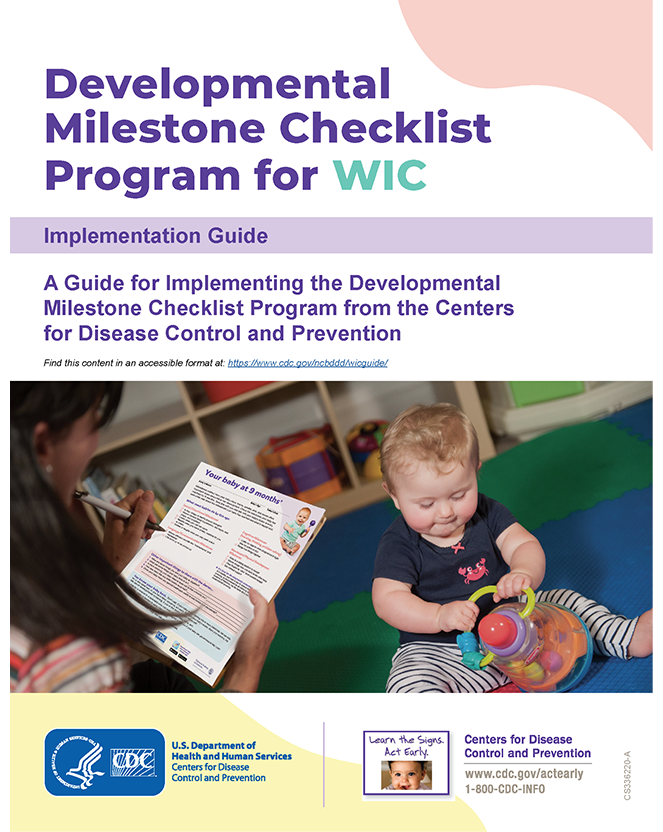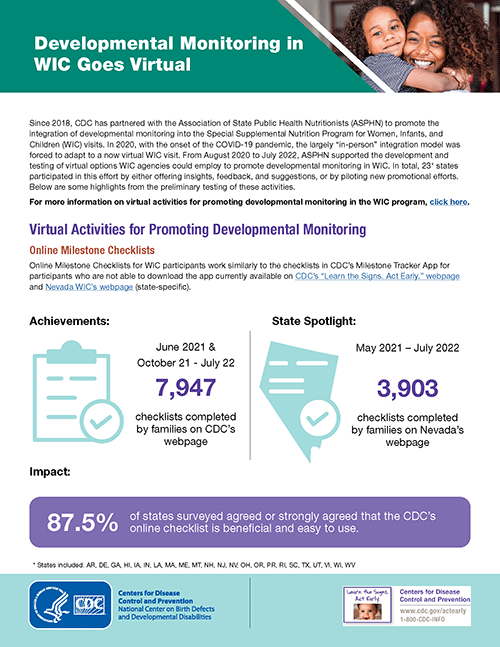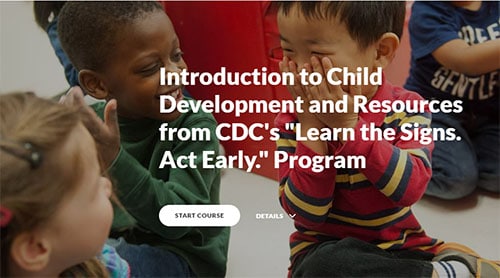Tracking Success
Tracking Program Uptake at the State/Agency Level
Tracking is important for several reasons: enrollment, implementation, and demonstrating your success. It helps to know the level of interest among your WIC clinics (enrollment) and those that actually implement the program (implementation). Knowing levels of enrollment and implementation can help you expand and improve your program.
If enrollment is lower than expected, you can review and refine your marketing efforts to better engage your
clinics. If many who enroll are not implementing, you can offer additional technical assistance.
After your clinics enroll, make them aware that you will be following up with them about implementation and any challenges they might have.
“Tracking and sharing the number of participating agencies across the state has really helped fuel some friendly competition that WIC families are benefitting from—because no one wants to be left out.”
Kathy Mertzlufft
Nutrition Services Manager, MO
Tips for Tracking

Clinic enrollment. An online enrollment process should make clinic enrollment easy to track, and posting this information may spur additional agencies/clinics to join.
Implementation. Tracking the number of clinics within your state or agency that are actively implementing may be more challenging, so be sure to let the clinics know that you will be following up to find out when they’ve begun implementing. Someone from your agency or your program champion may have to call clinics; asking for this information by email has been challenging in past efforts. Creative approaches may be needed to track implementation in your state or agency.
Impact. You might also like to know the difference this program is making for staff, families, and children. Program impact can be measured in a variety of ways. At a minimum, however, individual clinics will need to track certain implementation measures at the clinic level, introduced below. If you are interested in discussing the best ways to measure impact, please reach out to the CDC Learn the Signs. Act Early. team at ActEarly@cdc.gov.
Tracking Implementation and Impact at the WIC Clinic Level
Tracking a few key measures will help you know if your program is actually reaching your clients. It is important to know that clients who should have received the milestone checklists have received them and have been referred, if warranted. It also gives you valuable information to improve your program.
Programs are encouraged to develop a method to track the key measures listed below. You may be able to use your data system to track who has received the checklists and whether they have been referred for further evaluation and services.
Although tracking is ongoing, choose a specified time period to calculate this information. Initially, it might be helpful to review this information monthly or bimonthly. As the program matures, it can be done quarterly or every 6 months.


